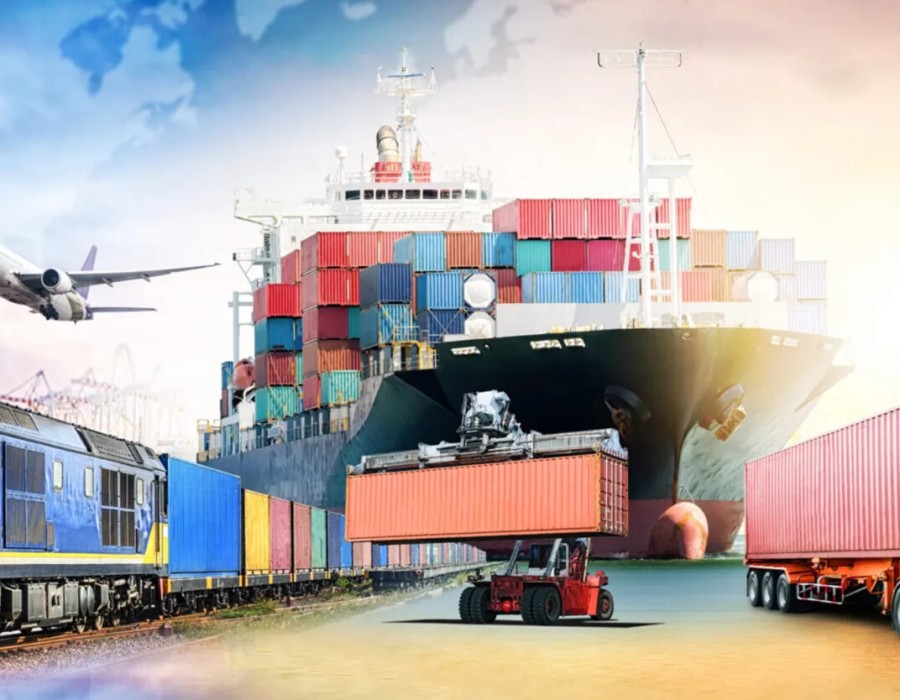A Complete Guide for Modern Shippers
In today’s fast-paced transportation landscape, dry freight plays a crucial role in keeping supply chains consistent, cost-efficient, and predictable. Whether you’re a small business shipping packaged goods or a large corporation moving non-perishable products nationwide, understanding how dry freight works is essential. Among the growing leaders in the space, Lading Logistics Dry van freight solutions stand out for offering seamless, reliable, and technology-driven shipping services to businesses of all sizes.
This article breaks down what dry freight is, how it works, why it’s so widely used, and how companies like Lading Logistics help shippers streamline operations with high-quality dry van freight support.
Understanding Dry Freight
Dry freight refers to transporting non-perishable goods in an enclosed trailer, most commonly a dry van. These trailers shield cargo from external elements such as sun, rain, dust, and theft. They are the most commonly used equipment in the U.S. trucking industry due to their versatility and affordability.
Common examples of dry freight include:
- Packaged goods
- Apparel and textiles
- Electronics
- Building materials
- Machinery parts
- Furniture
- Consumer products
Dry vans typically measure 48 to 53 feet long and are fully enclosed, making them the ideal option for cargo that does not require temperature control.
How Dry Freight Works in Modern Logistics
Dry freight shipping follows a clear, efficient process designed to simplify loading, transport, and delivery. Here is how it works step by step:
1. Identifying the Shipment Needs
Shippers begin by determining:
- Dimensions and weight of products
- Number of pallets or boxes
- Pickup and delivery locations
- Required delivery deadlines
This helps match freight to the right trailer size and carrier availability.
2. Choosing a Dry Van Carrier
Dry freight relies heavily on dependable carrier networks. With Lading Logistics Dry van freight services, shippers can quickly access qualified, vetted carriers offering the right equipment and capacity.
3. Scheduling Pickup and Loading
Dry vans are backed into warehouses or docks for easy loading. Cargo is typically secured using:
- Load bars
- Straps
- Pallet stacking
- Bulkhead barriers
Proper load securing ensures safe, damage-free delivery.
4. Transit Movement
Once loaded, the trailer is sealed and transported through a planned route. Dry freight is known for:
- High availability
- Quick turnarounds
- Cost-efficient linehaul options
Carriers prioritize safety and on-time delivery, especially when integrated with digital tracking systems.
5. Delivery and Documentation
At the final destination, the trailer is unsealed, unloaded, and verified. Key documents include:
- Bill of Lading (BOL)
- Proof of Delivery (POD)
- Freight invoices
Efficient documentation ensures transparent and smooth freight operations.
Why Dry Freight Is Essential for Supply Chains
1. Versatility Across Industries
Dry vans can carry almost any non-perishable item, making them the go-to option across retail, manufacturing, distribution, FMCG, and e-commerce.
2. Cost-Efficient Shipping
Compared to reefer or flatbed equipment, dry van freight is more budget-friendly due to:
- Lower operational costs
- High equipment availability
- Simplified loading and handling
Businesses save significantly on standard, non-temperature-sensitive shipments.
3. Protection and Security
Cargo is shielded from:
- Weather conditions
- Road debris
- Theft or tampering
This makes dry freight one of the safest modes for consumer goods and general merchandise.
4. Nationwide Accessibility
Because dry vans are the most widely used trailers, shippers rarely struggle with availability. Routes operate coast-to-coast, making them ideal for regional and long-haul freight.
The Role of Technology in Dry Freight
Modern dry freight logistics relies heavily on digital tools, such as:
Real-Time Tracking
GPS-enabled systems allow shippers to monitor:
- Location updates
- Live arrival ETAs
- Route performance
- Delivery confirmations
This level of transparency helps reduce delays and improves customer satisfaction.
Automated Load Matching
Platforms like Lading Logistics use AI-driven freight matching to connect shippers with the right carriers quickly. This eliminates manual searching and speeds up the booking process.
Paperless Documentation
Digital BOLs, e-signatures, and cloud-based documentation reduce errors and streamline compliance.
Predictive Analytics
Data insights help shippers forecast:
- Capacity demand
- Seasonal rates
- Expected delivery windows
- Carrier performance
Tech-enabled operations reduce costs and boost efficiency across the supply chain.
Why Shippers Prefer Lading Logistics Dry Van Freight Services
Lading Logistics has become a trusted partner for dry freight solutions due to its commitment to reliability, innovation, and customer support. Their dry van freight services offer:
✔ A Vast Carrier Network
Shippers get instant access to vetted, compliant carriers for both short-haul and long-haul routes.
✔ High Service Reliability
Lading Logistics ensures on-time pickup and delivery with integrity-focused operations.
✔ Advanced Tracking & Visibility
Real-time shipment monitoring provides complete transparency from start to finish.
✔ Competitive Pricing
Thanks to optimized routing and digital matching, shippers benefit from cost-efficient freight rates.
✔ Dedicated Support Team
Experts guide shippers through planning, documentation, and execution for stress-free freight management.
With these advantages, Lading Logistics Dry van freight services elevate the efficiency, reliability, and cost-effectiveness of any supply chain.
Conclusion
Dry freight continues to be the backbone of commercial transportation because of its simplicity, flexibility, and wide applicability. Whether you're moving consumer goods, packaged materials, or industrial supplies, dry van trailers ensure your cargo arrives safely and on time.
Through advanced technology, strong carrier partnerships, and customer-centric solutions, Lading Logistics Dry van freight services make the shipping process smoother, smarter, and more dependable. For businesses seeking optimized logistics operations, dry freight remains one of the most strategic and cost-effective choices.





Comments